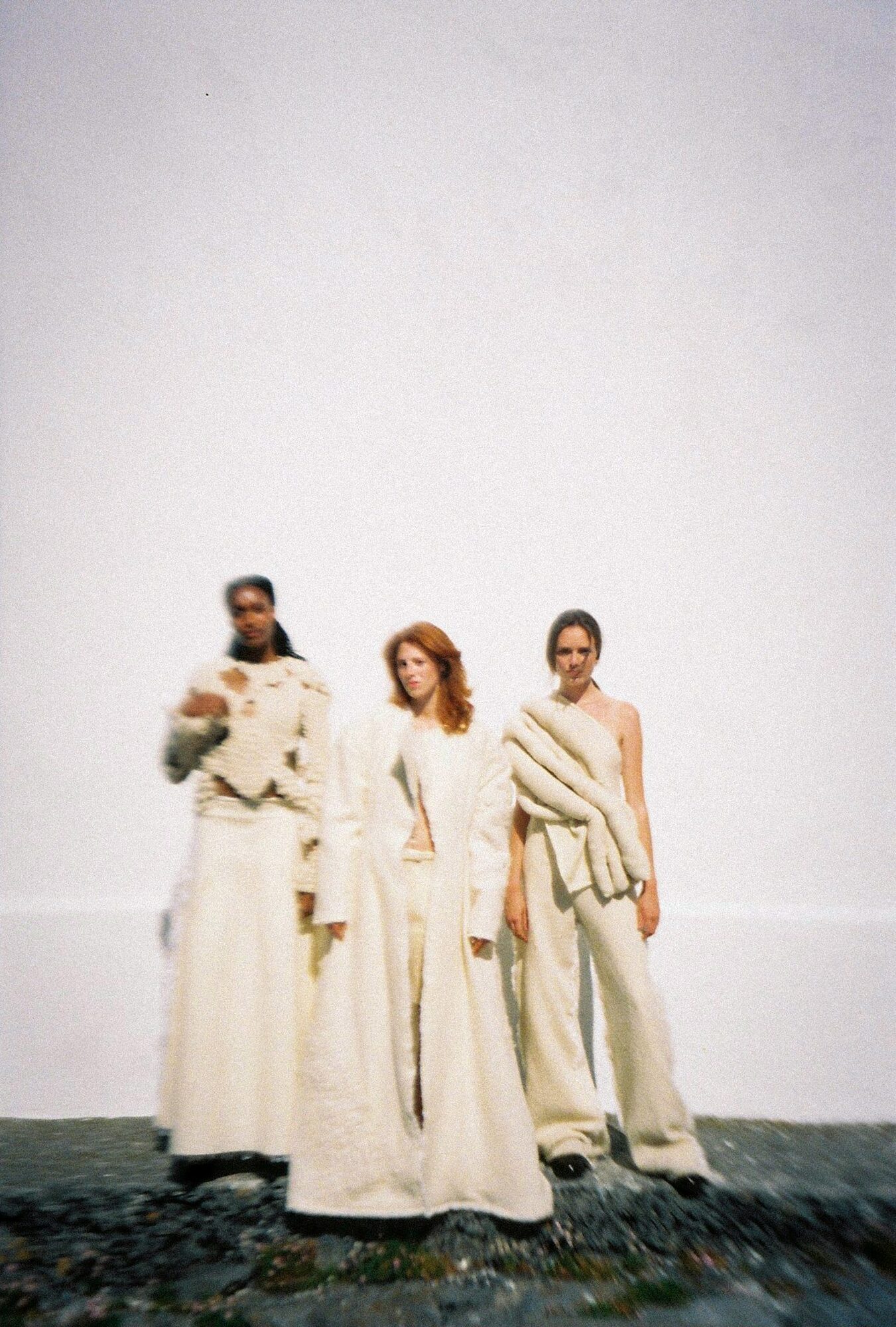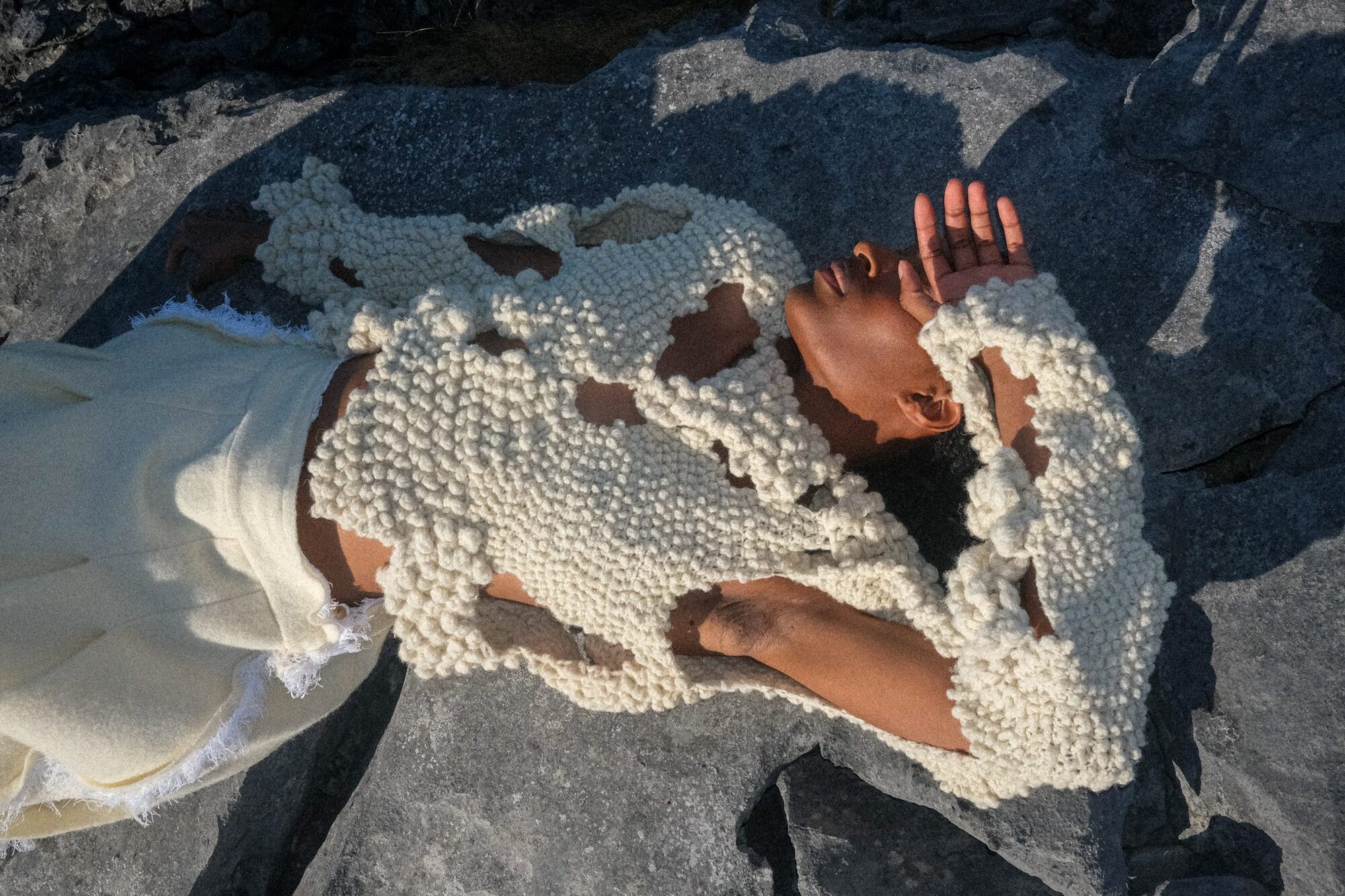BÁINÍN - A research on Irish wool.
Category: Apparel
Irish wool is a classified waste product in Ireland and the wool industry has been struggling because of the increase and the accessibility of synthetic fibres and wool from warmer climates, which is less coarse due to a lower micron count. Sarah's graduate collection “BÁINÍN” is focused on the issues surrounding Irish wool with emphasis on the Galway Wool, (Ireland’s only native breed of sheep). She has researched the issues regarding Irish wool which is that it is quite itchy in its raw form but believes that the structure that this coarse, raw material provides is that of very few biodegradable, garment-suitable-materials. Wool is the original fibre and is fire retardant, reduces dust mites, temperature controlling and it is biodegradable. Wool has been proven to be a slow releasing fertilizer to soil. We are constantly being told that Irish wool (which is quite coarse due to our cold climate) is not suitable for high fashion. This collection was a research on how we could incorporate other materials with traceable Irish wool in order to make garments that could be worn. Sarah also treated and significantly softened the yarn which she did use. Sarah lined garments with deadstock Irish linen which is already in this country and layered the knit trousers over a pair of linen trousers making this outfit modular and more versatile. Sourcing and traceability was vital for this collection and transparency is something very important to Sarah as a sustainable fashion and textile designer. For the materials of this collection, Sarah sourced traceable raw Galway wool and traceable Galway spun yarn and used dead-stock, end of roll Irish linen for lining which is also on the island of Ireland. Low emission processes were used to create this biodegradable collection such as knit, crochet and felting. Any threads used for sewing were one hundred percent cotton. Textural and silhouette inspiration was drawn from the Burren in county Clare. Sarah referenced couture garments from Parisian fashion houses in the mid 1900's (a time when Irish wool was being used and valued in the industry) and contrasted this with the garments that the Irish people had been wearing at this same time. The importance of partnership and building communities between farmers, wool scourers, spinners, designers’ and researchers was a very important part of this project. Connecting the farmer to the garment was a goal that Sarah has achieved. All wool used in this collection will fertilize the soil if the garment ever reached landfill.



 Copy URL
Copy URL
 Login to Like
Login to Like 